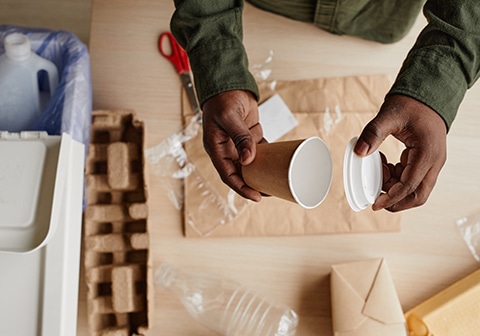There’s a growing global awareness to reduce, reuse and recycle as much as possible to minimise our impact on the environment. This applies to moving houses too. In particular, we tend to treat a lot of packing materials as single use items, and we use lots of them when we move house. So how can we move more sustainably? Here are some eco friendly moving tips for your next move.
Tip 1: Plan your next move now
Preparing for an eco friendly move begins with changing your organisational habits around the home. Even if you aren’t planning to move for some time, don’t wait for the annual spring clean to declutter. Start now. If you adopt the habit of continually decluttering your home, you’re well on the way to an eco friendly move, because smaller moves require fewer packing materials.
Most of us wait until we move to declutter, because moving forces you to handle everything you own when you start the packing process. So, you’ll also save yourself time and effort when you do need to move. As time is so precious with so much to do, you’ll reduce your stress levels too.
Tip 2: Look for alternative packing materials
As we mentioned in our article about saving money when moving, getting creative with packing materials also lends itself to an eco friendly move. Using old clothes, linen, towels and sheets instead of paper reduces your need for packing materials. This is good for your budget and the environment.
Here are some ideas:
- Use old sheets or blankets to wrap furniture
- Use balled up socks to fill spaces in boxes instead of paper
- Pack electronics between layers of T-shirts or sweaters
Thoughtful, efficient packing will also reduce your overall need for packing materials.
- Don’t overload boxes and distribute the weight evenly
- Put smaller objects inside larger ones to reduce the overall volume
- Disassemble items if possible to reduce the space required to pack them
Tip 3: Packing boxes aren’t single use items
As long as an old packing box is still in good condition, it’s fine to use it again. Check the box for tears, rips or impact dents. Tape them up securely or pack accordingly, i.e. if the box has lost some protection, don’t use it for breakables.
- We sell recycled boxes in our box shop.
Tip 4: Choose eco friendly alternatives to plastic
We’ve had a love affair with plastic wrap for a long time because it’s such a good material for weather and dirt protection. However, plastic wrap is a single use item, so seek alternatives to using it wherever possible.
- Hire moving blankets or use old sheets to wrap furniture
- Use biodegradable packing materials instead of plastic
- If there’s no choice but plastic, make sure you recycle it so it doesn’t end up in landfill
Yes, there are now many biodegradable packing materials made from paper, cornstarch, seaweed and other items. There are even packaging products made from mushrooms!
Tip 5: Reuse and recycle when you’ve unpacked
Packing paper is a natural material, so it is biodegradable. But there’s no need to dispose of used packing paper. Like boxes, you can use it many times if it isn’t ripped to pieces. Offer you boxes and paper on your local social media page to make them useful again. You’ll also make someone happy by saving them money. Finally, recycle any boxes or paper that have become too damaged.
Happy eco friendly moving!
